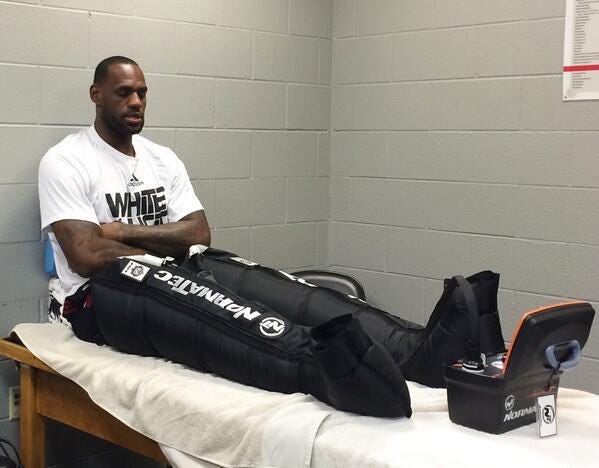The only way to mitigate not being successful is not to quit. Successful people are persistent. They keep trying until it clicks. In a world littered with choices and optimized for quitting, commitment to the bit and persistence are underrated.
About a year and a half ago, I wrote about publishing to Substack for 52 weeks straight. At the time, I was estatic, but I kept going. Week after week, I embraced my commitment and published for 123 weeks straight. No matter where I was, what I was doing, or my other commitments, I always found a way. I wrote from my phone at a European hostel with squinted eyes trying to read on my small screen and an exhausted body after a late night out. I edited during long, monotonous car rides. I sacrificed precious sleep. I relish my eight hours. I wrote every week with no exceptions. However, last week it changed. My 123 week streak disappeared and sunk to zero.
I could come up with a myriad of excuses explaining how I spent the weekend before in Chicago or am trying to prepare for a new job and move, but that isn’t necessary. I began to feel withered down. I needed a break. Brute forcing my way to a goal is one way to jeopardize my persistence. It is the wrong kind of stubborn.
It felt good to take a break. I needed to refresh. Play was blurring into work, and it wasn’t conducive to my best writing. The streak became performative as if I was always required to maintain it, but I realized it was an arbitrary requirement I manufactured in my head. I didn’t need to keep going. I needed to ensure it continued to be fun. It’s what the best do anyway.
History’s greats take leisure. It is a requirement to enable great work. Steve Jobs took long, device‑free walks. Soren Kierkegaard, a Danish philosopher, emphasized, above all, to not lose your desire to walk. Athletes spend hundreds of thousands of dollars on recovery methods and go to Cabo and Disney World after grueling seasons to decompress.
When I was younger trying to be a decent athlete myself, my dad always emphasized the formula for super compensation, work + rest = improvement. Only then did I begin to understand that not only must I work hard, but I must allow myself to recover. Breaks are encouraged. I started to notice it, seeing the emphasis on rest from those I admire.
Lebron James spends $1.5 million on training, recovery, and diet every year. Derrick Henry spends $240k on his body to endure an NFL season. They spend as much time and money on recovery methods as they do on training.
Working without rest is a recipe for burnout. People wither themselves down to bare bones. They work themselves until they can’t anymore. They don’t recover, but the best take time for leisure, fun, and recovery.
In endurance sport training programs, typical programs have five levels, or zones of intensity, to structure an athlete’s program. Zone 1 is the easy stuff – a walk, a light jog, or cycle – and Zone 5 is your max efforts. Of course, you can’t spend all, or even the majority, of your time at max effort. What zone do most athletes spend their time training in? 80-90% of their time is spent training in Zone 2. The nice, long conversational efforts that can be maintained. It is not whittling your muscles down. It is active recovery.
Zone 2 builds a base for the athletes while improving their health and body efficiency. It is easy for anyone to do. A 5-mile run while talking to a friend is much more appealing than a 5-mile effort trying to hold down your lunch afterward. Zone 2 prioritizes longevity and resembles the roots of a tree. It isn’t glamorous and often goes unnoticed, but it supports the tree and allows growth from the foundation.
LeBron James played 70 NBA games this season, at 40 years old mind you, thanks to his strong base and attention to recovery. Much to the dismay of Lakers’ fans, he played 46 of 48 minutes in a pivotal playoff game. I would love to be 40 years old and be able to run around with the best athletes in the world, with most being half your age, for 46 minutes! Insanity. Derrick Henry has played two full seasons at age 28 and 29, rare for an NFL running back, the last two years thanks to the work done to maintain his body.
The greats prioritize leisure and recovery. It is as important as the work done. They are distinguished by their energy and longevity. They can maintain long efforts without breaking down and burning out. They keep themselves in the game. They don’t interrupt compounding. They maintain their persistence.
How does this apply to me? For anything I hope to master, the more time I spend with it, the better I get. With a big base or strong roots to build from, it is much easier to improve. The roots don’t crumble when facing adversity or being uprooted from constant stress.
Having the ability to rest and recalibrate is rare. But it would seem this is what allows the successful to succeed. It is rest and not working themselves into the ground that lets them surpass their competition. Constant work without rest is a simple thing. It is our natural inclination on what to do when we need to get better, but resting and recovery is what makes people stand out.
When you look at the successful, they don’t work until they have no soul or have bloodshot eyes. For me, it isn’t brute forcing my way to week 124 that will get me to my goals. It’s resting. Taking time for fun. A constant, meaningful effort allows people to return each day without burning out. Life flourishes at the extremes. Work hard. Rest hard.
Appreciate you for being here.
-Scantron
Into the Archives:







